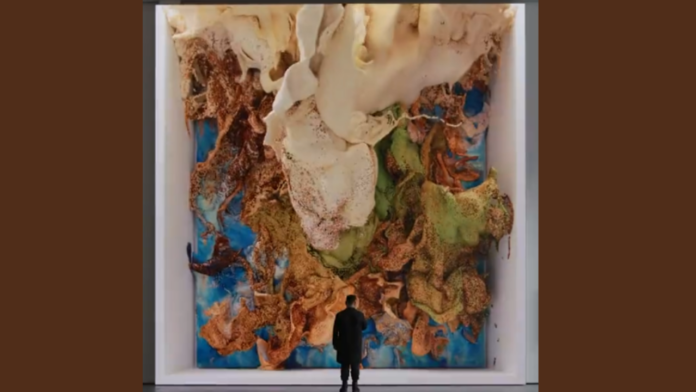The Museum of Modern Art (MoMA) has embraced the future of art by acquiring “Unsupervised—Machine Hallucinations,” a generative artwork by Turkish digital artist Refik Anadol. The piece, created last year, employs a sophisticated AI model that digests over 200 years of MoMA’s art catalog, producing ever-shifting audiovisuals that reinterpret the original works.
Anadol’s creation, currently displayed in MoMA’s lobby until October 29, has become a crowd-pleaser, drawing both admiration and criticism. The 24-foot-tall video artwork’s dynamic nature, influenced by light, movement, acoustics, and weather, has sparked conversations about the role of AI in art and how institutions should approach such creations.
The controversy surrounding AI-generated art is not new, with critiques likening “Unsupervised” to a “glorified lava lamp.” However, in a tweet, Anadol proudly announced it as the “first generative AI and tokenized artwork” to enter MoMA’s permanent collection.
“Unsupervised” comes with an accompanying NFT collection, reflecting Anadol’s commitment to minting an NFT for every artwork. Visitors can also mint a free NFT tied to the piece by scanning a QR code near the artwork—a “blockchain-based memento.”
The piece was donated by crypto entrepreneur Ryan Zurrer, owner of “Human One,” a piece by artist Mike “Beeple” Winkelmann that sold for $28.9 million in 2021. Zurrer’s contribution aligns with MoMA’s broader initiative to integrate digital art and blockchain into its collections.
In addition to “Unsupervised,” MoMA has acquired “3FACE,” an adaptive generative artwork by American artist Ian Cheng. This artwork analyzes on-chain wallet data to create visual portraits of participants, further emphasizing MoMA’s commitment to engage with digital art and blockchain technologies.
The museum’s recent initiatives, including “MoMA Postcard,” highlight its dedication to supporting artists who explore emerging technologies. In a statement, MoMA expressed its commitment to expanding visual vocabularies and embracing transformative change through these new initiatives. The acquisitions mark a bold step toward incorporating the cutting-edge world of AI and blockchain into the museum’s long-term ethos.


